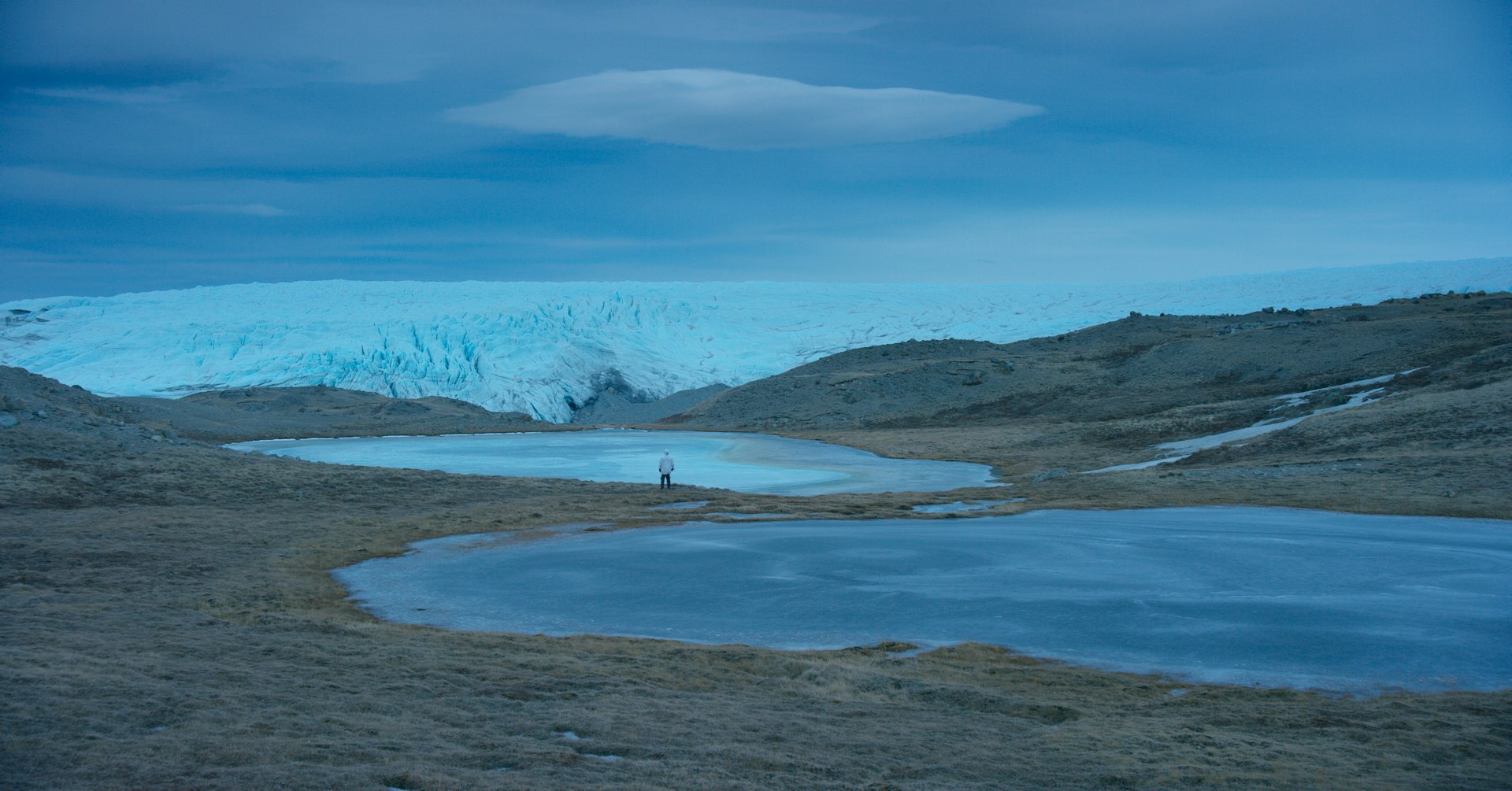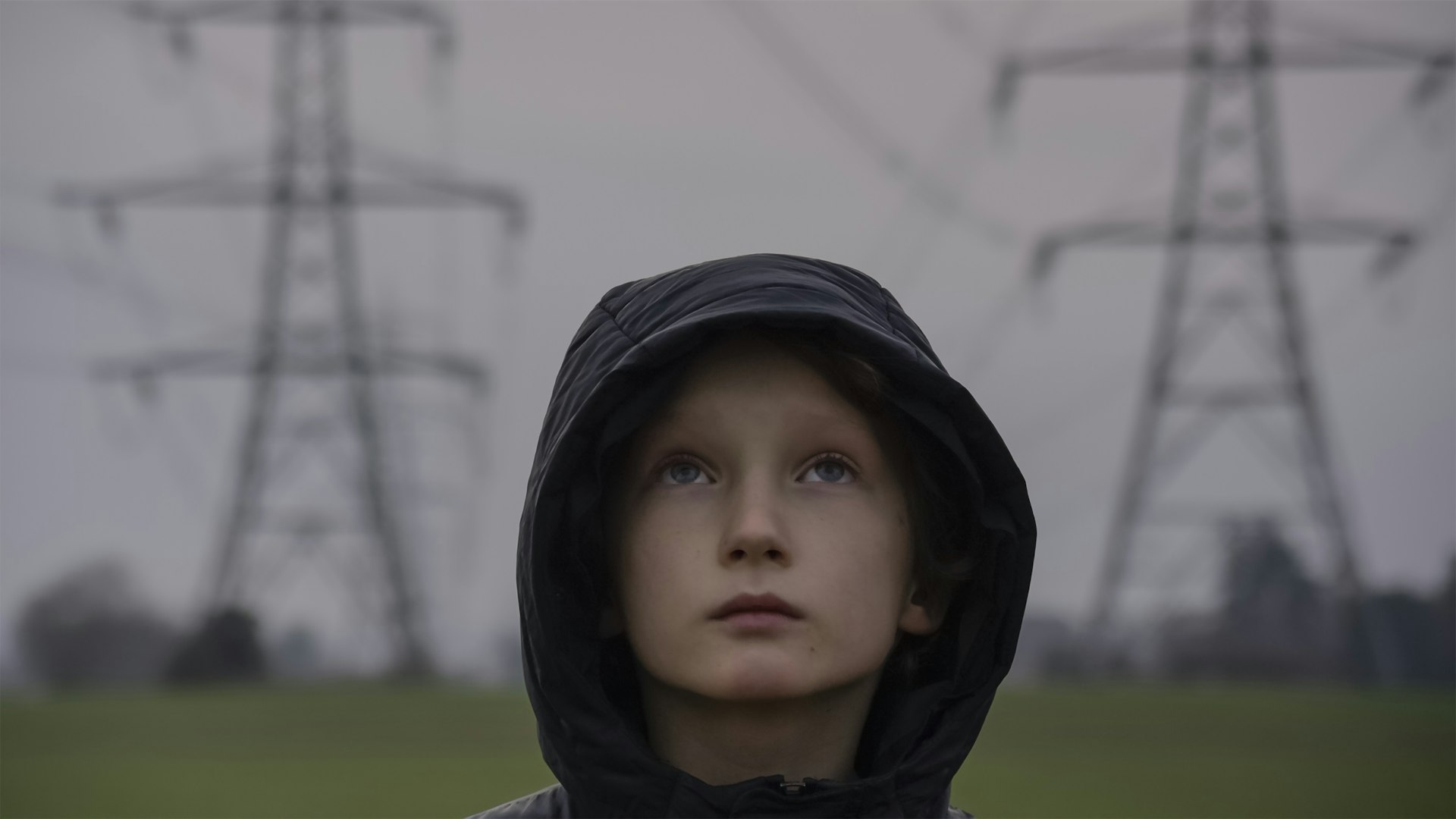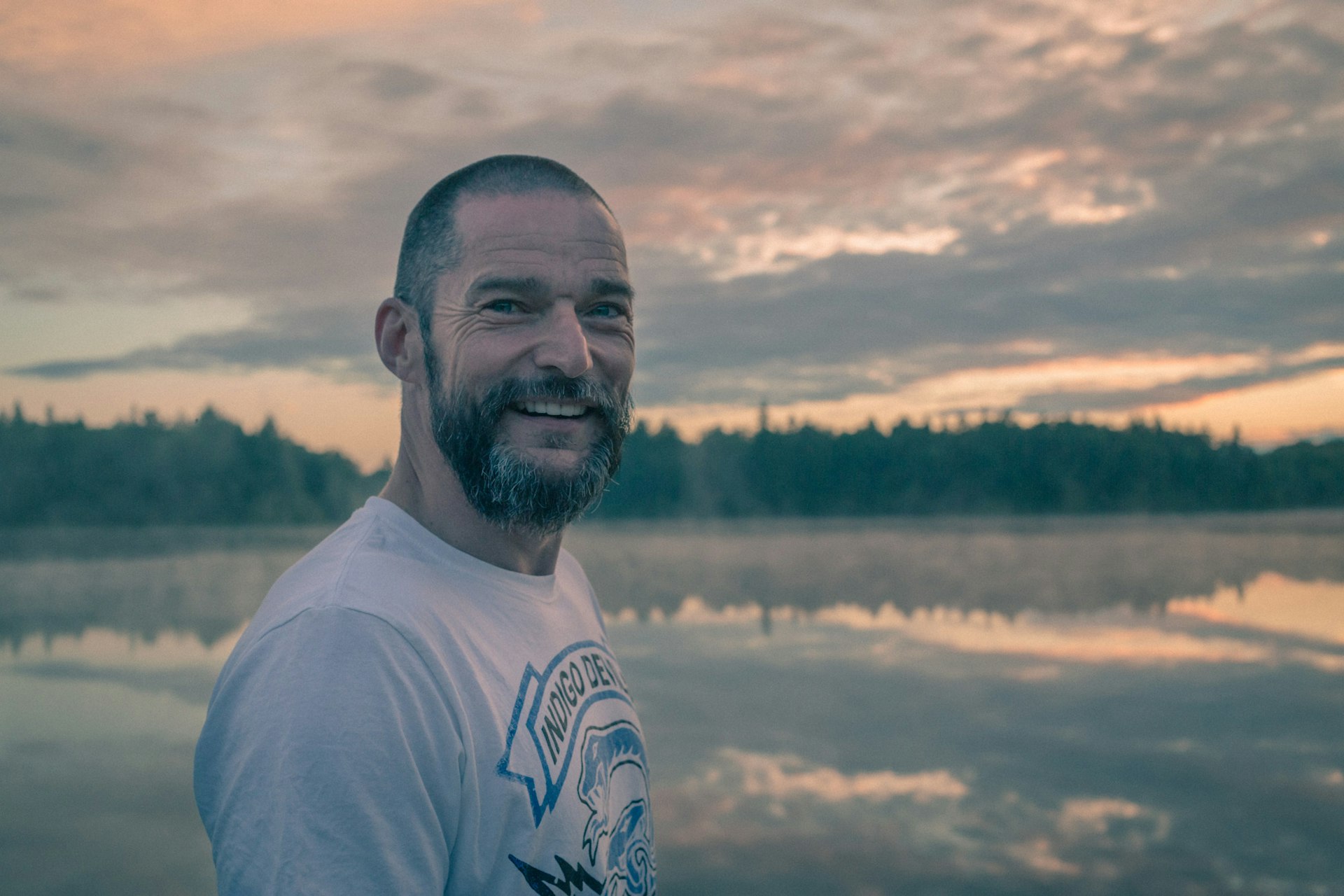
Using film to face up to the devastation of climate change
- Text by Biju Belinky
- Photography by Still frames from 'Purple' by John Akomfrah, courtesy of Barbican
Stepping into a dim corridor, you are met with industrial-size water gallons hanging from the ceiling – the reason why the sole source of light in the room is obstructed. In the distance, you hear water. Be it thunderous, trickling or drizzling, it is a constant presence when it comes to Purple – John Akomfrah’s six-screen video installation tackling climate change, currently on show at the Barbican.
Commissioned by the art institution two years ago, the immersive piece was shot across ten countries, ranging from Alaska to Greenland. The new material was then spliced with narrative archival footage, sourced from the artists’ personal collection, as well as the BBC Natural History and British Film Institute archives. The resulting conversation is then soundtracked independently, and divided into different acts, each one taking the watcher a step forward in the cycle of life, from birth until death, or decay.

 Purple is haunting – shining a light on the fraught relationship humans have with our environment, and with our own sense of growth. The six screens show a cycle of historical reports on consumption, family life and medical history, the rhythm delineated by the constancy of clocks and water in the background. While one screen shows a black and white shot of doctors discovering the effects of coal on the lungs of miners, another shows a nuclear power plant today, lilac smoke billowing in the hidden sun. Lone figures staring at landscapes that might not be here in a few years. Parallels between flocks of birds and the ocean: the finality and power of both nature and humankind, tied together.
Purple is haunting – shining a light on the fraught relationship humans have with our environment, and with our own sense of growth. The six screens show a cycle of historical reports on consumption, family life and medical history, the rhythm delineated by the constancy of clocks and water in the background. While one screen shows a black and white shot of doctors discovering the effects of coal on the lungs of miners, another shows a nuclear power plant today, lilac smoke billowing in the hidden sun. Lone figures staring at landscapes that might not be here in a few years. Parallels between flocks of birds and the ocean: the finality and power of both nature and humankind, tied together.
The second instalment in a planned four-part series of films, John Akomfrah’s creation highlights and reconnects two aspects of life many are unwilling to accept or seem to have forgotten: humans are part of nature, we affect it directly, and as such, we rely on it to survive, whether we like it or not. Climate change is not a hoax.
“We are part of this world, but we’ve lost our connectivity to it, and our actions are having disastrous consequences,” curator Leila Hasham tells Huck. “We need to start looking at what we’re doing and becoming aware of it. I think that’s why John’s film is impressive – his film is not didactic, there’s no finger-pointing; but it prompts a really urgent question about where we’re all going and what do we do about it, because our future right now is quite bleak.”
Originally from Ghana, the London-based artists’ creations usually tackle very important questions dealing with identity, post-colonialism, matter and temporality. He was also one of the founders of the Black Audio Film Collective, a group dedicated to analysing and addressing matters pertaining to Black British identity, and creating media connected to this subject matter. The installation prefacing Purple, titled Vertigo Sea, used the artist’s iconic method of fusion between the historical and the current, and addressed “man’s relationship with the sea and exploration of its role in the history of slavery, migration, and conflict.”


 Purple: John Akomfrah is on at the Curve, Barbican from October 6, 2016 to January 7, 2017.
Purple: John Akomfrah is on at the Curve, Barbican from October 6, 2016 to January 7, 2017.
Enjoyed this article? Like Huck on Facebook or follow us on Twitter.
